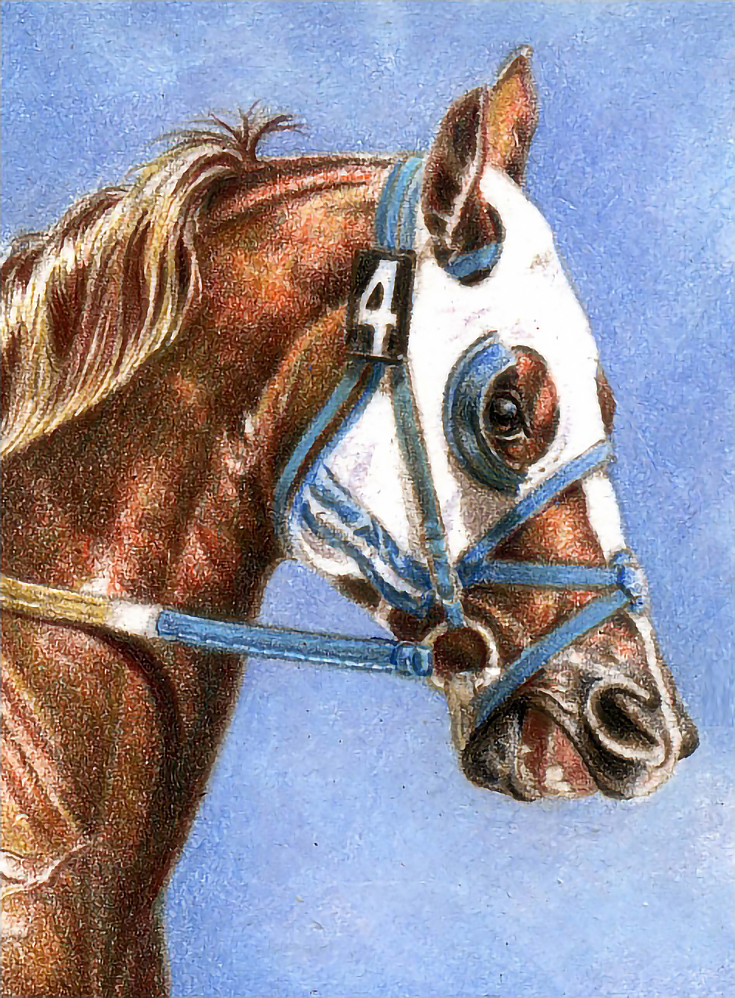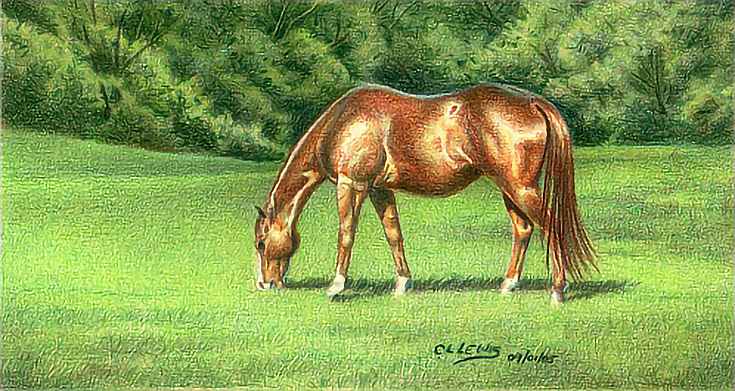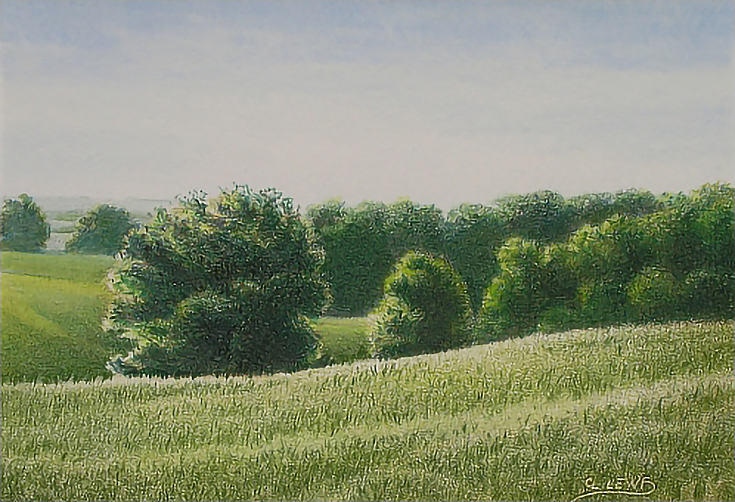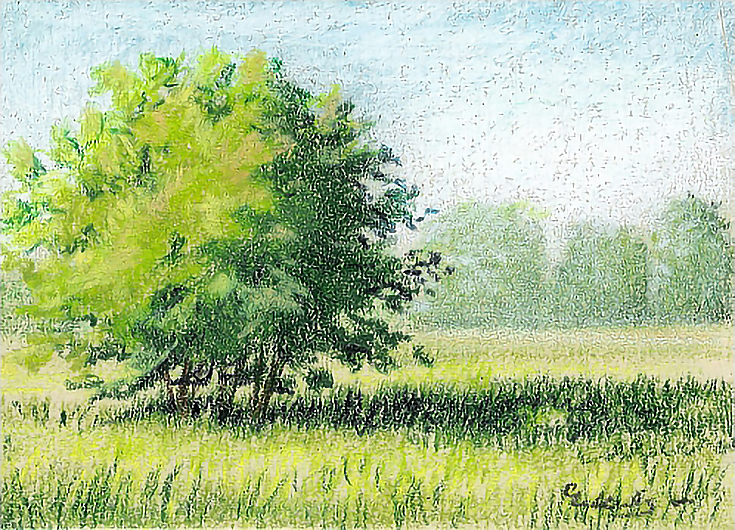All artwork is unique, but miniature art is a special genre all by itself. There are many ways to define miniature art, but the most recognizable standard is any flat work that is smaller than 25 square inches in size.
Miniature art covers all subjects, mediums, and styles. Part of the lure (and wonder) of miniature art is the high level of detail possible on such a small scale—it’s simply breathtaking to see tiny intricate designs, or grand sweeping landscapes, or even tightly-focused florals and portraits, all captured on such small surfaces!
The level of detail required for these subjects makes colored pencils an ideal medium for miniature art.
Miniature art categories
There are three primary categories for miniature art.
Art cards editions and originals
Art Cards Editions and Originals (ACEOs) are trading card-sized pieces of art. The only stipulation is that they must be 3-1/2 inches by 2-1/2 inches. They are created for sale, with many artists doing ACEO portraits by order.
ATCs (art trading cards) are also 3-1/2 by 2-1/2 inches, but are designed for trade and many are created by artists who are members of card swap groups.
Field of Eight, No. 4
2.5 x 3.5 inches (ATC)
This ATC was created as part of an art card swap among horse artists and included a series of eight race horse images. I’ve also painted art cards by order as portraits and as promotional pieces for shows and other events. They make great marketing tools for potential art buyers and especially for portrait clients.
Miniature art
Miniature art ranges from as small as a postage stamp (or smaller!) up to 25 square inches. There are no “standard sizes” or configurations for exhibit work. Some markets, such as doll house collectors, require artwork to be scale to standard sizes.
Green Pastures
5 x 3.5 Inches
Small format art
Small format art ranges in size from just over 25 square inches (smallest) to 11×14 inches (largest). While not technically miniature art, many exhibits co-feature miniature and small format works.
Spring
5 x 7 (Small Format) on paper
Miniature art techniques
Almost every colored pencil technique you use for traditional artwork will work for miniature or small format art work. Layering, glazing, direct techniques, and wet techniques using water soluble techniques are all suitable.
Whatever technique you use, keep in mind these next few pointers, which are especially applicable to miniature art:
1. Keep your pencils sharp. No tool is better for creating high levels of detail on a small scale than a needle-sharp pencil.
2. Harder lead is better. Prismacolor Verithin pencils are ideal for miniature art, as is any other pencil with a hard, thin lead. They hold a sharp point longer and you can do multiple layers without filling up the paper’s texture. They’re also great for impressing marks if you want an impressed mark that also has color.
3. Think before you mark. Miniature art is viewed up close and personal. Many times, fans approach miniature art with magnifying glasses in hand, so you don’t want to leave any marks that detract from your art. Make every mark count. It’s better to consider color and stroke options before committing them to paper.
4. Erase judiciously. If you have to make corrections, use the least intrusive method possible. Consider using Scotch tape first. If you must erase, do so lightly.
Materials used in making miniature art
Many of the same materials available for traditional sized artwork are also suitable for miniature artwork. I’ve used matboard, art paper, sanded art paper, and even canvas for miniature art.
Due to its small size, smoother textured surfaces are generally better than those rough textures if you like high detail, but always match your surface to your technique. If you’re planning to use only dry colored pencils, use a surface that will allow you to lay down saturated color and rich values. If you’ll be using a water soluble colored pencil or if you want to use the texture of the paper to enhance the finished artwork, you have more choices in texture.
The smaller you go, the more you will need to use magnification tools. I use an Opti-Visor and/or magnifying glasses when creating miniature artwork.
Uses for miniature artwork
Exhibitions and markets
Dedicated exhibits of miniature art occur around the country and the world. Exhibit opportunities are as hotly contested for some of the better known shows as they are for traditional sized artwork.
There are also specialized markets for miniature art. The most unique and possibly most overlooked markets are the modeling markets. Dollhouse builders and collectors are always looking for unique, to-scale original artwork with which to decorate their miniature interiors. Model railroaders and other modelers might also be good markets.
Miniature portraits are also marketable. Pair them with a locket or pendant to turn them into jewelry or market them with miniature frames and easels for shelf display.
Small scale studies
Artists through the centuries have worked out difficult passages in small paintings by doing studies on a smaller scale. I am no different and I encourage you to try it, too. Miniature studies and colored pencils are a great way to sort out the details in larger works regardless of what medium you use for the larger work.
Experimentation
In addition to creating marketable artwork, miniature and small format work is perfect for trying new techniques or materials. This artwork is an experimentation in style and subject matter. A study of pattern and color in the abstract style.
Abstract in Brown & Blue
3.5 x 2.5 Inches
This next small landscape was created on Uart sanded art paper. The small size allowed me to work with a new surface, see how colored pencil worked on a sanded paper, and to do a little experimenting without a large investment in time or materials.
Tree Study in Colored Pencil
3.5 x 2.5 inches
Conclusion
If you already create detailed colored pencil artwork in traditional sizes, then you are fully qualified to create miniature artwork as well. The only stipulation is that your artwork’s overall size should be no more than 25 square inches.
And it doesn’t matter if you’re a complete newbie—everyone has to start somewhere! Just get out a magnifying glass and have some fun!
This post may contain affiliate links.





